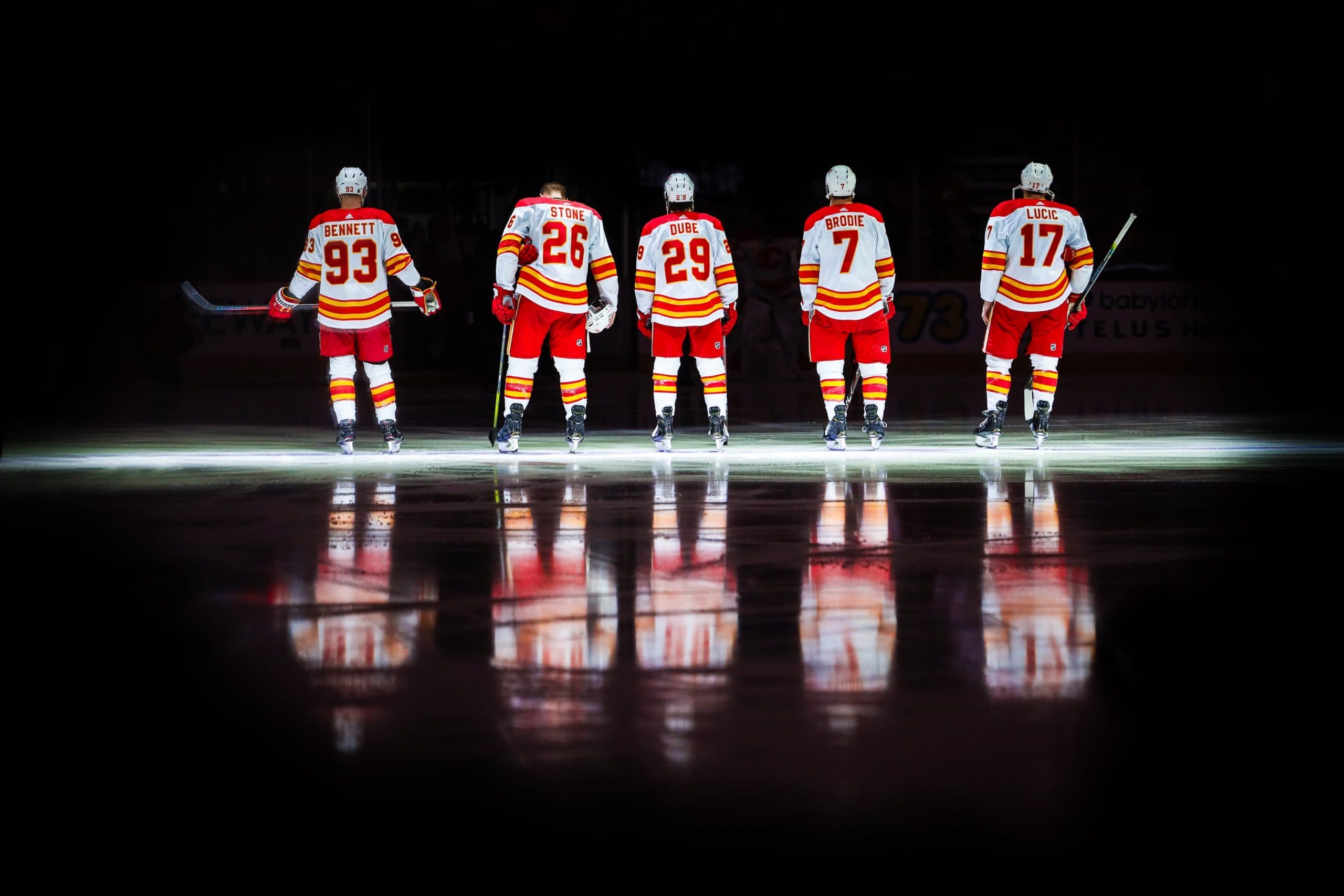Nation Sites
The Nation Network
FlamesNation has no direct affiliation to the Calgary Flames, Calgary Sports and Entertainment, NHL, or NHLPA
CBA School: Article 50 – Team Payroll Range System (part 2, Player Compensation and the Cap)

Photo credit: Sergei Belski/USA Today Sports
Last time, we dug into the many, many (many) sources of Hockey-Related Revenue. Now, we dig into Player Compensation and the Cap. Onwards, as we wander though Article 50: Team Payroll Range System a bit more.
We’ve moving past Section 50.1, but we’re jumping around quite a bit.
Player salary and bonuses
Players can only be paid player salary or bonuses under the guidelines of their player contracts.
Salary is pretty straightforward: a player has a salary laid out in their contract that notes how much base salary they get in the NHL (or AHL, if it’s a two-way deal).
Bonuses are a bit more complex:
- Performance bonuses are available for (a) entry-level players, (b) players signing at age 35+, and (c) players with 400+ games of NHL experience who spent 100+ days of the last season on the injury reserve and signed a one year contract. ELC players can only receive Schedule A (based on hitting milestones and performance on the team, paid by the team), Schedule B (based on awards placement and performance relative to the league, paid by team and league), and games played bonuses. 35+ and 400+ game players have more open-ended performance milestones.
- Signing bonuses are capped at 10% of salary for ELC players, but the CBA doesn’t specify a limit for everybody else.
Traditional hockey practices
Only the hockey club can pay players – they can’t have side hustles for the team or team-related entities – but that doesn’t prohibit the team from also continuing on some hockey traditions:
This Article 50 does not prohibit certain “Traditional Hockey Practices,” pursuant to which Clubs or Club Affiliated Entities have provided additional things of de minimis value to
Players including, without limitation, all reasonable expenses associated with parental travel to and lodging for an Entry Level Player’s first NHL game, golf outings, parent-son road trips (in season trips permitted for a trip that includes a minimum of two (2) games and a maximum of four (4) nights), seasonal events and seasonal gifts (e.g., picnics and Christmas parties or gifts), and Milestone Gifts (e.g., for significant career- or League-related achievements (as set forth in Exhibit 38), and for particular significant Club-related achievements (subject to NHL approval after consultation with the NHLPA)), so long as no Milestone Gift exceeds $25,000 (U.S.). Such Traditional Hockey Practices shall not be counted in a Club’s Upper Limit or Lower Limit, or against the Players’ Share.
Player cap hit
The cap hit of a player contract is the average annual value (or AAV) of their contract. For daily cap calculation purposes, only base salary and signing bonuses are included – performance bonuses aren’t counted until they’re been earned.
So if a player has a one year deal with $5 million in salary, their AAV is obviously $5 million. If they have a three year deal with salaries of $4 million, $5 million and $6 million, their AAV for each year of the deal for cap purposes is $5 million.
Team cap hit
Based on pre-season projections of hockey-related revenues from the league and negotiations – the NHLPA has the option to invoke their “escalator,” which bumps the cap up by up to 5% – an Upper Limit and Lower Limit are set for the salary cap.
Each team’s cap hit is the sum of the individual player cap hits on their roster.
Daily cap calculation
The actual calculation of cap hits is complex because it’s not like the teams have the same 23 players on their roster all season. So here’s how it works:
- At 5 p.m. ET each day of the regular season, the NHL takes a snapshot of every team’s roster.
- Based on the players on their roster – active, injury reserve, non-roster, and any injured non-roster players who qualify – the league takes a snapshot of all the cap hits.
- Based on the cap snapshot, the amount the team is below the Upper Limit is pro-rated based on the number of days in the season (at least 184) and pushed forward.
Teams can “bank” these cap savings from earlier in the season and spend them (by going over the daily cap hit) later in the season. But teams cannot spend cap savings that they have not yet accumulated.
Escrow
Finally, escrow.
So recall how the NHL and NHLPA negotiate the cap’s Upper Limit every season? Part of those negotiations is determining the escrow percentage withheld from player payments during the season. The cap’s Upper Limit is based on projected HRR, but the CBA requires the players to only get 50% of Actual HRR. So a percentage of player salary is withheld and then paid to the players when Actual HRR is confirmed – this usually takes a year or two given the complexity of the HRR categories and calculations.
